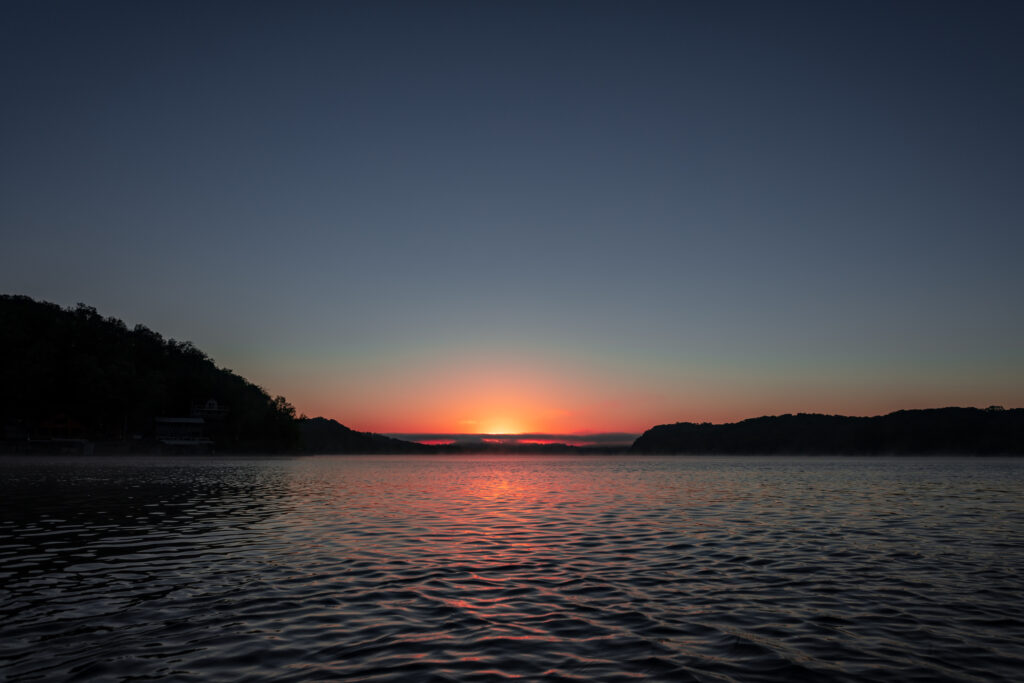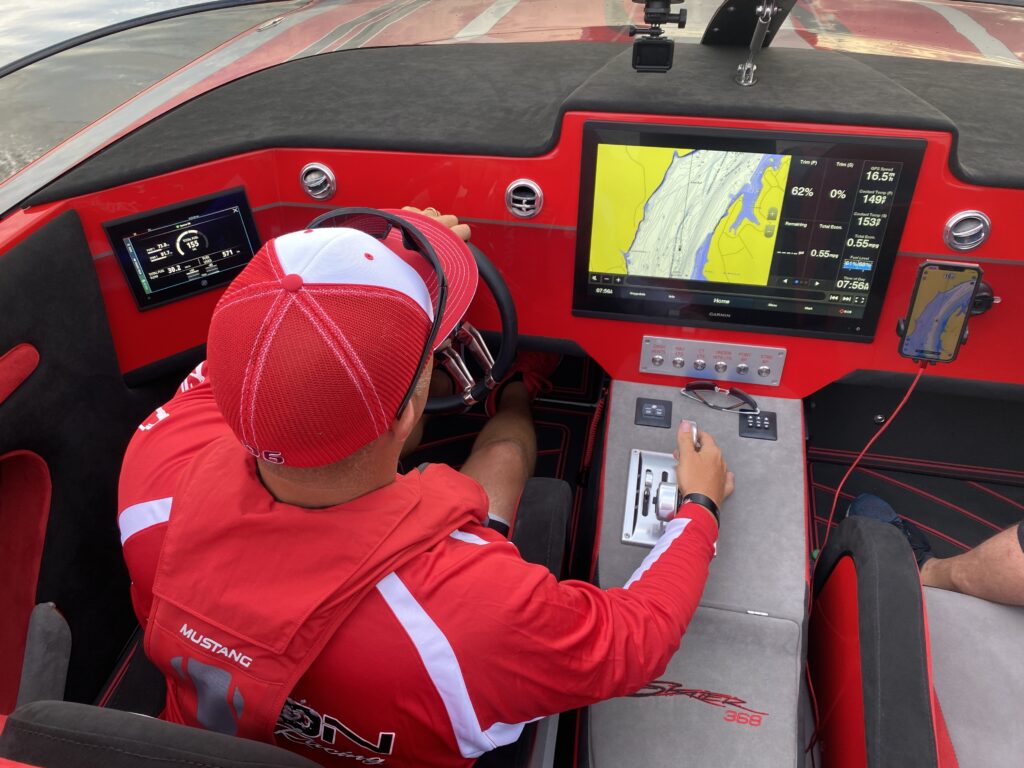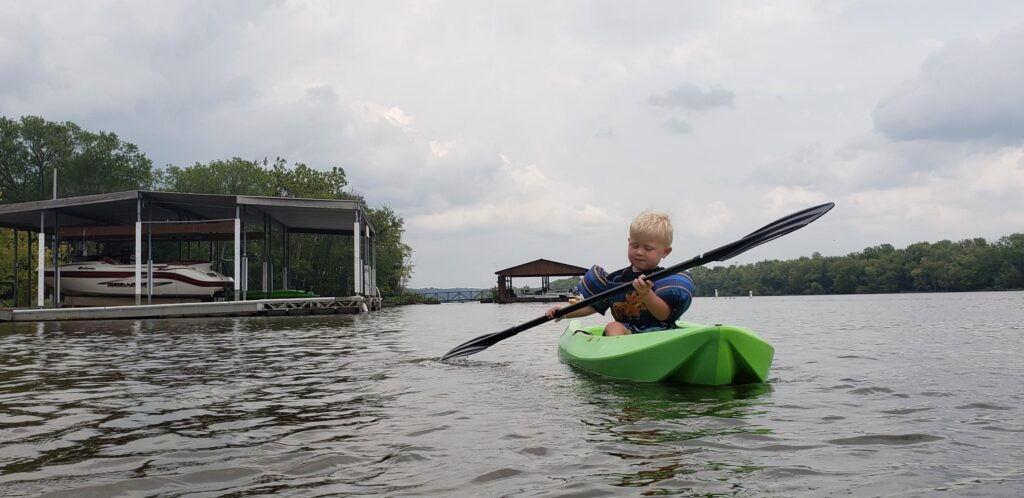
Photo Courtesy of Laura Simpson – Lake Therapy Photography
Beauty and brilliance upstream: boaters are exploring the Lake above the 40MM
by Deanna Wolff
It’s no secret that there’s absolutely nothing better than spending the day cruising, coving, and catching fish, and converging at waterfront restaurant/bars on the Lake of the Ozarks. But the unique life on the “Small Waters” above the Lake’s 40 Mile Marker may indeed be a secret that not many boaters know about.
That phrase, “Small Waters,” is a term of endearment adopted by folks who live above the 40MM. The Lake below the 40MM, they call the “Big Waters.” Since that’s where most of the lakefront bars, accommodations, and Lake events take place, most boaters don’t venture too far upstream, where things get narrower and quieter. But there’s plenty to enjoy and discover off the Lake’s beaten path.
Robert Fredrich, engineering manager at Burns & McDonnell in Kansas City, has a vacation home at the 86MM (Lake Ridge Bay Cove). Talk to Robert, and he’ll praise the beauty and benefits of boating in the Small Waters. Since he was a child, his family would travel to the Lake from Boonville on most weekends.
“We’d all get in my dad’s truck – us kids would be laying down in the truck bed – and drive to the Lake where my father would launch his boat at Gravois Mills. We’d spend the day on the Lake eating ham sandwiches and Little Debbie snacks, and visit the now long-gone iconic lakefront hotspots like Shooters 21, The Clown, and Topsider,” Fredrich recalls.
Now on weekends, Fredrich enjoys going out on his 26 ft., 200 HP pontoon, exploring the nature, coves, and islands on his end of the Lake, in the spirit of Tom Sawyer. “One of the most patriotic things I’ve ever seen at the Lake was last summer just before the 4th of July. It was when I saw a bald eagle swoop down and catch a fish in the water. Sights like these are possible in the Small Waters where there is much less boat traffic and human activity,” Fredrich reveals.
The Small Waters offer stunning views and a sense of peace that can get lost in the busy weekends below the 40MM. Imagine having your own island for a day where you can picnic, swim, fish, and enjoy precious time with friends and family!
The waters above the 40MM are also a kayaker’s and fisherman’s dream. Less boats equals less wakes, and the serenity is unlike anything further downstream. Its tranquility draws boaters to slow down, relax, and truly enjoy the raw nature and beauty of the Lake of the Ozarks.
Navigating Upstream

Photo by Jeff Helmkamp
Navigating the waters above the 40MM offers challenges and risks similar to navigating the Big Waters, but upstream, it is essential to have functioning navigating and depth-finding equipment. You’ll also want to know your boat’s static and running drafts (how much water your boat needs to float or how high water comes to the sides of your boat when it’s moving). Always stay in water that is deeper than your draft.
When navigating into coves, side channels, and around islands, it is important to drive slowly and watch your depth-finder for quickly decreasing depths that point to suddenly shallower water. This will give you more time to react before running into any potential problems. Also watch for sudden color changes in the water, which can indicate shallow areas. When encountering these shallow areas, you’ll need to take the proper extra precautions, like trimming (tilting) your engine, or backing up and simply steering clear of the area. If you do happen to run aground, driving slowly reduces the risk of serious damage, and you have a much better chance of getting your boat unstuck.

Photo Courtesy of Robert Fredrich
While the Lake above the 40MM may look narrow on a map, plenty of places are still quite wide; but you’ll begin to notice the farther up you go, the narrower it gets, and boat traffic thins out. The main channel is 30 to 40 ft. deep in most spots, while most coves range from 3 to 15 ft. – though some are shallower – in the summer season, and some can be completely dry in winter. Most of the islands are often like icebergs: very shallow off the shore with a small, gradual slope, so boaters shouldn’t carelessly buzz by them. Extra care is needed while navigating these tricky areas, but the ultimate reward is finding those quiet, secluded coves or islands, and chances are you’ll want to return again and again.
Where To Go
There’s more to this story! Click to create a free account or sign in keep reading.
